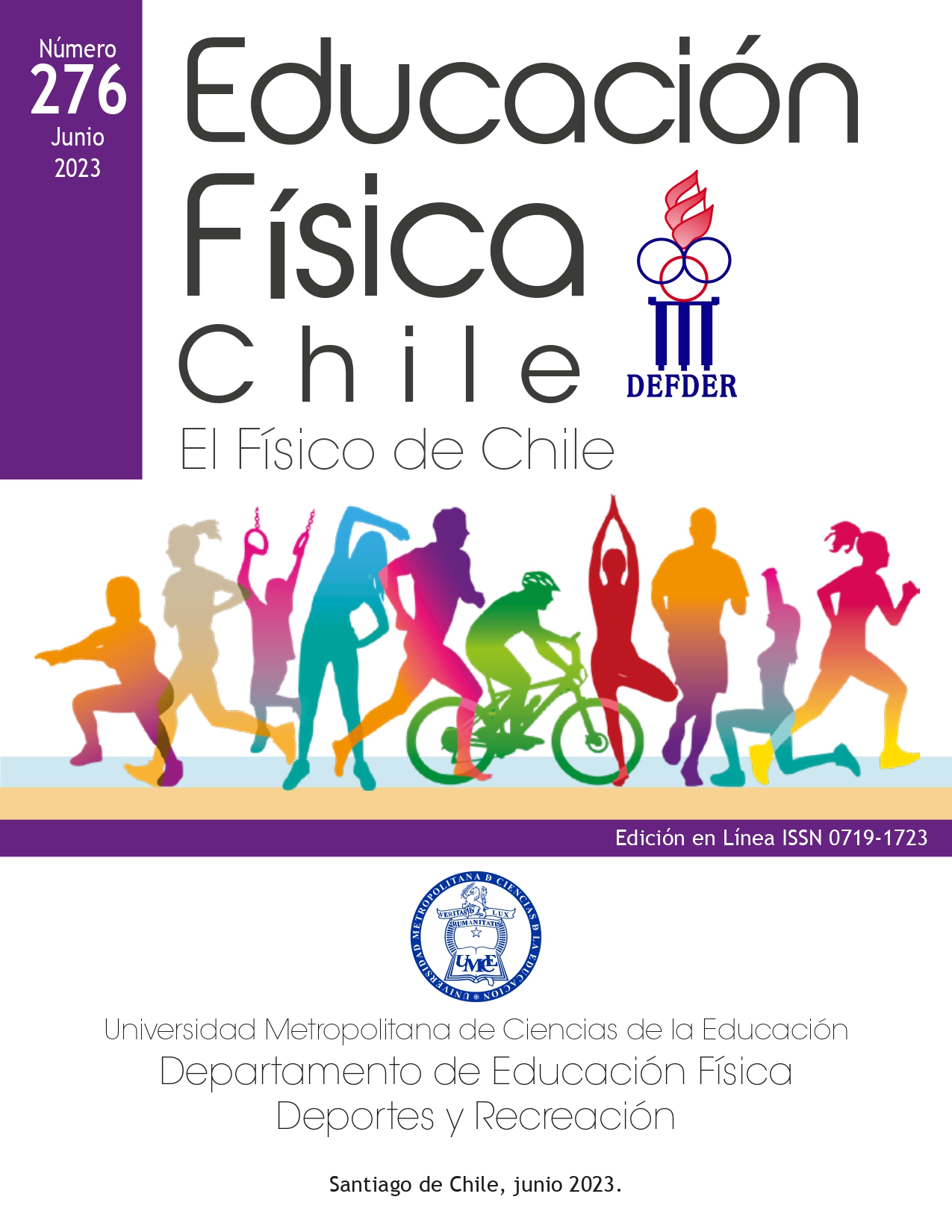Main Article Content
Jul 10, 2023
Abstract
Aims: To verify the usefulness of 2 jumping protocols and the combination of these, as enhancing exercises to improve speed in 30 meters in trained Chilean athletes. Methodology: Randomized single-blind experiment, repeated measures. Subjects were tested for speed with photocells at 30 meters after a base warm-up. 3 subsequent sessions were carried out with a warm-up protocol plus a vertical Post Activation Potentiation (PAP) protocol, a horizontal PAP protocol, and a combined PAP protocol. Results: through the ANOVA test of a factor of repeated measures, it was verified that there are no significant differences in PAP protocols (p=0.61) in average speed in 30m. Neither in times (s) of 30m (p=0.63), 20m (p=0.39) and 10m (p=0.39).
Conclusion: The PAP protocols with jumps used in this study have no statistical effect on the speed of 30 meters. The individual performance depend on the use or not of the jumps in their habitual training.
References
De Oliveira J J, Harley Crisp A, Reis Barbosa C G, de Souza e Silva A, Júlio Baganha R, (2017). Effect of Postactivation Potentiation on Short Sprint Performance: A Systematic Review and Meta-Analysis. Asian J Sports Med. 8(4), e14566. 10.5812/asjsm.14566.
Hamada, T., Sale, D., MacDougall, J. and Tarnopolsky, M. (2000). Postactivation potentiation, fiber type, and twitch contraction time in human knee extensor muscles. Journal of Applied Physiology, 88(6), 2131-2137.
Healy, R. and Comyns, T. (2017). The Application of Postactivation Potentiation Methods to Improve Sprint Speed. Strength and Conditioning Journal, 39(1), 1-9.
Lesinski M., Muehlbauer T., Büsch D., Granacher U. (2014). Effects of complex training on strength and speed performance in athletes: a Systematic Review. Sportverletzung Sportschaden : Organ der Gesellschaft fur Orthopadisch Traumatologische Sportmedizin. 28. 10.1055/s-0034-1366145.
McBride, J., Nimphius, S. and Erickson, T. (2005). The Acute Effects of Heavy-Load Squats and Loaded Countermovement Jumps on Sprint Performance. The Journal of Strength and Conditioning Research, 19(4), 893.
Sale, D. (2002). Postactivation Potentiation: Role in Human Performance. Exercise and Sport Sciences Reviews, 30(3), 138-143.
Seitz, L., de Villarreal, E. and Haff, G. (2014). The Temporal Profile of Postactivation Potentiation Is Related to Strength Level. Journal of Strength and Conditioning Research, 28(3), 706-715.
Till, K. and Cooke, C. (2009). The Effects of Postactivation Potentiation on Sprint and Jump Performance of male academy soccer players. Journal of Strength and Conditioning Research, 23(7), 1960-1967.
Tillin, N. and Bishop, D. (2009). Factors Modulating Post-Activation Potentiation and its effect on performance of subsequent explosive activities. Sports Medicine, 39(2), 147-166.
Turner, A., Bellhouse, S., Kilduff, L. and Russell, M. (2015). Postactivation Potentiation of Sprint Acceleration Performance Using Plyometric Exercise. Journal of Strength and Conditioning Research, 29(2), 343-350.
Wilson, J., Duncan, N., Marin, P., Brown, L., Loenneke, J., Wilson, S., Jo, E., Lowery, R. and Ugrinowitsch, C. (2013). Meta-Analysis of Postactivation Potentiation and Power. Journal of Strength and Conditioning Research, 27(3), 854-859.



